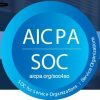With technology playing a central role in modern businesses and being so integral to their operational success, organizations are increasingly seeking ways to streamline technology expenditures while enhancing efficiency and service quality.
This article explores effective methods of optimizing technology costs, the role of automation in facilitating these strategies, and the value of an effective partnership between the Technology and Procurement departments for optimization of spend.
Strategies for Technology Cost Optimization
The first strategy we should take into account when talking about cost optimization is Cost Reduction and Cost Avoidance. Essential pillars of IT cost management, these strategies ensure companies spend wisely and prevent unnecessary future expenditures. Through renegotiating contracts, consolidating services, and adopting forward-thinking technology practices, organizations can significantly lower their technology costs.
Another great strategy to focus on is Planning and Demand Management. What does that mean in practice? Proper planning and managing technology demand ensure organizations allocate resources efficiently, matching IT capabilities with business needs. This alignment prevents overprovisioning and underutilization, optimizing expenditure.
One of the simplest strategies but frequently overlooked it to consistently Check for Billing Errors. Conducting regular audits to identify billing inaccuracies and reassessing the necessity of current services with a proper service management process helps in correcting overspendings and adjusting resources to fit actual requirements.
Now for another hot strategy to help with keeping your costs at bay is an effective User Management Process. Periodically revising and managing user license and subscriptions prevents paying for unused or underutilized services, ensuring companies only invest in necessary resources on technology that is bringing value to the business.
Last but not least as an essential cost optimization strategy is the crown jewel of Contract Review and Benchmarking. Contract review entails a meticulous analysis of the terms, conditions, and costs associated with technology services and products. This step is vital for uncovering hidden costs, ensuring service levels meet current business demands, and identifying opportunities for renegotiation.
Organizations should focus on evaluating the total cost of ownership (TCO) of technology assets, including direct and indirect costs over their lifecycle. By understanding these costs, companies can negotiate better terms, such as discounts for longer commitments or more favourable payment schedules, and clauses that allow for scalability and flexibility.
Benchmarking complements contract review by comparing an organization’s technology costs against industry standards and best practices. This process involves gathering data on how similar companies manage and spend on technology services and products, providing a reference point for what is considered reasonable or advantageous pricing and service levels. By periodically reviewing contracts and comparing costs against industry benchmarks, organizations can secure more favourable terms and ensure they receive the best value for their investments.
Automation in Cost Optimization
Automation stands at the forefront of modern cost optimization strategies, simplifying the identification and implementation of cost-saving measures. Tools that monitor spending, manage users, and flag billing issues in real time can dramatically enhance efficiency and accuracy in cost management. This technological aid allows companies to focus on strategic growth initiatives while maintaining control over IT expenditures.
Collaboration between Technology and Procurement Departments
The synergy between IT and Procurement departments is critical for optimizing technology spending effectively. With Procurement’s expertise in market trends and negotiation and IT’s insights into technological needs and solutions, this partnership ensures that investments are both strategic and cost-effective. Together, they ensure that the company’s technology strategy aligns with its financial goals, securing optimal value from every dollar spent.
Key Takeaways
Technology cost optimization is a comprehensive and ongoing process that requires strategic planning, meticulous management, and a collaborative approach. By embracing cost management practices, leveraging automation for efficiency, and fostering a partnership between their Technology and Procurement Departments, organizations can enhance their technological capabilities without overspending.
The journey to effective technology cost management is continuous, adapting to changing business needs and technological advancements. A commitment to strategic cost optimization, coupled with the benefits of automation and collaborative efforts, positions companies to thrive in the competitive digital landscape, achieving both technological excellence and financial prudence.
Following this balanced approach to optimize your technology spend, your organization will be able to innovate and grow in 2024 while at the same time ensuring financial health and sustainability in the process.

